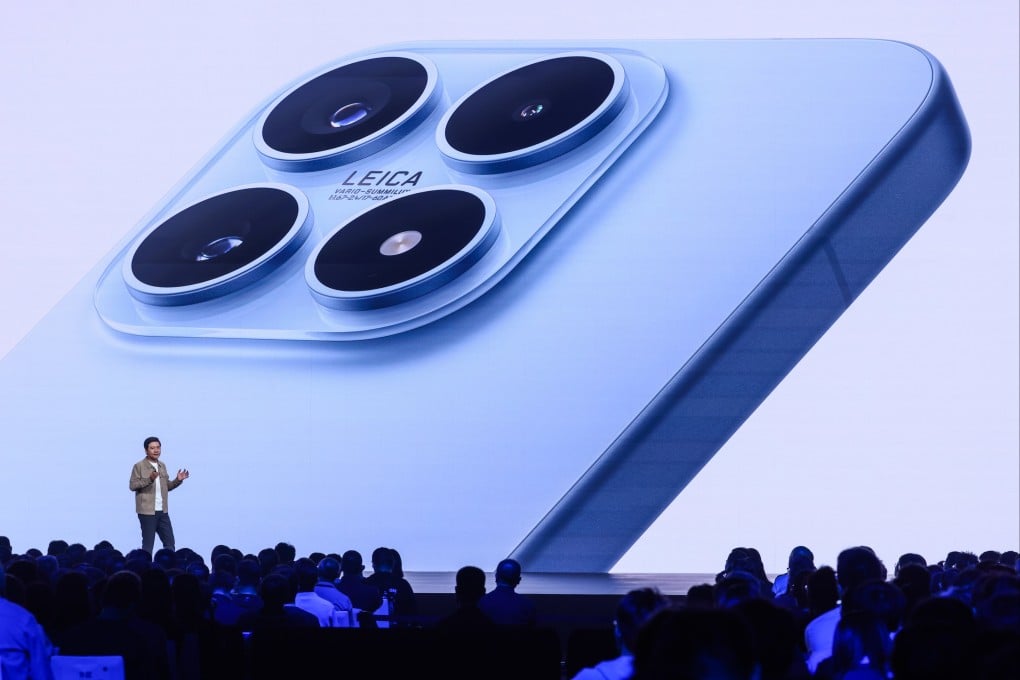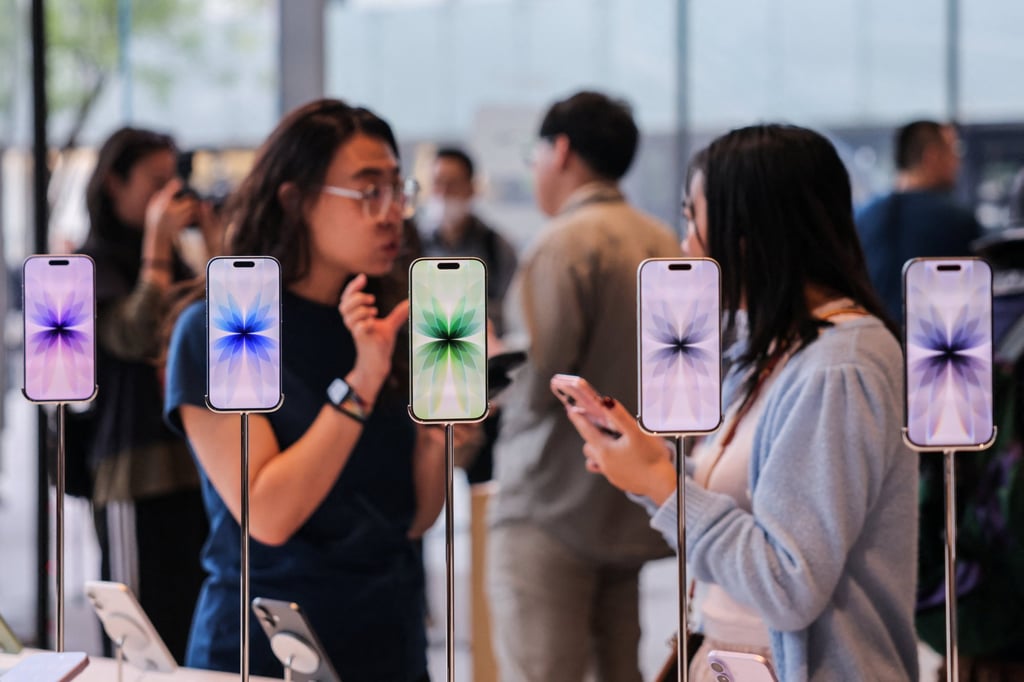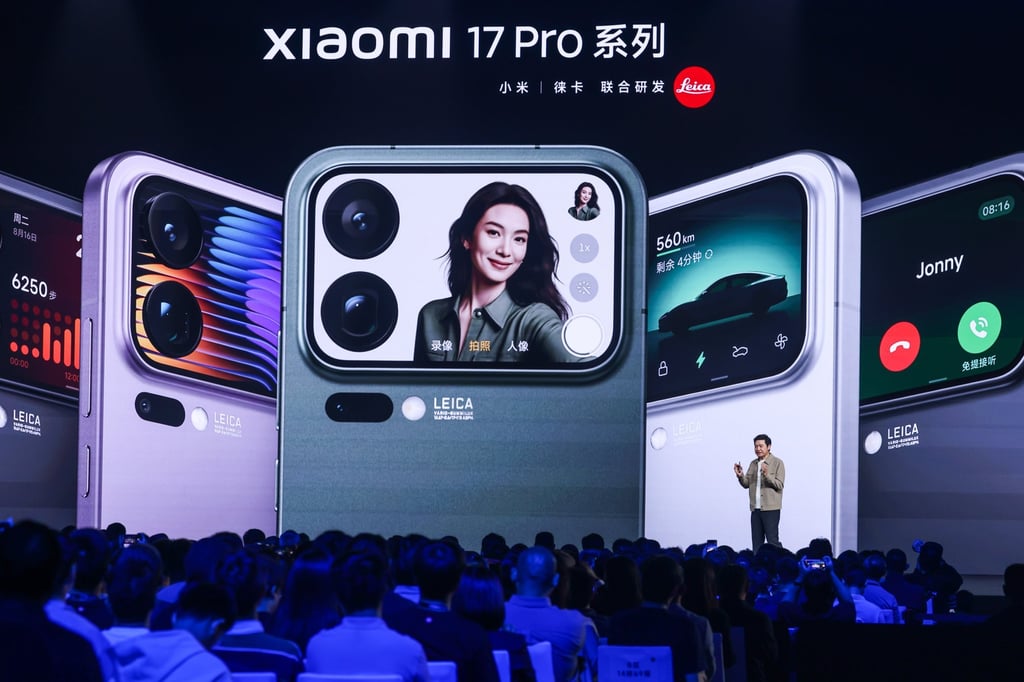Xiaomi makes ‘bold attempt’ to challenge Apple’s iPhone 17 in China
2025-09-30
The Chinese gadget maker aims to position itself as a strong rival to Apple in the premium segment, analysts say

Xiaomi is resolute in maintaining its lead over Apple in the world’s largest smartphone market, as the Chinese gadget maker goes head to head with the US technology giant with its freshly unveiled flagship handset series, the Xiaomi 17.
Speaking after Thursday night’s product launch in Beijing, founder and CEO Lei Jun said “it’s time for everyone to get reacquainted with Xiaomi phones”, adding that the Xiaomi 17 series “has surpassed the iPhone 17 series in many areas”, according to a report from Chinese media outlet PCHome.
His confident remarks reflected the company’s determination to win over Chinese Apple fans, who placed a record number of pre-orders for the new iPhones two weeks ago, defying expectations of tepid demand due to weak consumer spending and heated competition from Chinese competitors like Huawei Technologies.
“The Xiaomi 17 Pro series represents the company’s boldest attempt yet to position its flagship directly against Apple,” said Chiew Le Xuan, mobility research analyst at Canalys.
“Beyond raw performance and pricing, Xiaomi is deploying a series of symbolic and strategic marketing moves … clear signals that Xiaomi wants to be seen not just as an alternative, but as a peer rival to Apple in the premium segment.”

Xiaomi and its Chinese rivals have been strengthening their foothold in the 4,000 to 6,000 yuan (US$561 to US$841) segment while making inroads into the premium tier, according to Ivan Lam, senior analyst at consultancy Counterpoint Research.
The latest Xiaomi smartphone series reinforced that trend by “boosting upgrades across critical specifications and introducing notable innovations”, he said, adding that the brand has got off to “a good start” with its strategy of “bigger improvements with minimal price mark-up”.
In the second quarter, Xiaomi was the fourth-largest smartphone vendor in China, surpassing Apple, which ranked fifth, according to research firm IDC.
In an unconventional decision, Xiaomi jumped directly to the 17 series after launching the 15 line-up in October. Lu Weibing, president of Xiaomi’s smartphone division, said last week that the new naming reflected significant enhancements in the Xiaomi phones rather than an attempt to “ride on Apple’s publicity”.
Still, Lei – who once said he was inspired by Apple founder Steve Jobs – is never one to shy away from a Xiaomi-Apple comparison. On Thursday, he said the Xiaomi 17 series was positioned as a formidable competitor to the iPhone 17 series, as he presented their respective design, display, battery life, camera systems and pricing side by side.
The Xiaomi 17 line, starting at 4,499 yuan, is 1,500 yuan cheaper than the base model of the iPhone 17 launched earlier this month, while offering comparable or better performance, according to Xiaomi.
“Apple users are welcome to buy Xiaomi phones,” he said, eliciting laughter from the packed audience.
The Xiaomi 17 series is powered by Qualcomm’s new Snapdragon 8 Elite Gen 5 processor, built on the same advanced 3-nanometre technology as the A19 Pro chip tailored for Apple’s iPhone 17 Pro and Pro Max.

While both the Snapdragon and A19 Pro are powerful and efficient smartphone chips, the Qualcomm chip outperformed the A19 Pro in Geekbench 6’s multi-core performance test and matched it in single-core performance.
Geekbench is a cross-platform benchmark used for measuring the performance of central processing units in computers, laptops, tablets and smartphones.
Xiaomi has also equipped its new line-up with larger battery capacities. The base Xiaomi 17 is equipped with a 7,000 milliamp-hour (mAh) battery – almost double the iPhone 17’s 3,692mAh. The higher-end Xiaomi 17 Pro Max boasts a 7,500mAh battery, compared to the iPhone Pro Max’s 5,088mAh.
Xiaomi has also equipped its new line-up with larger battery capacities. The base Xiaomi 17 is equipped with a 7,000 mAh battery – almost double the iPhone 17’s 3,692 mAh. The higher-end Xiaomi 17 Pro Max boasts a 7,500 mAh battery, compared to the iPhone Pro Max’s 5,088 mAh.
Additionally, the Xiaomi 17 features a display with a peak brightness of 3,500 nits, higher than the iPhone 17’s 3,000 nits. Theoretically, this makes the Xiaomi phone’s screen easier to read in bright sunlight.
On its Pro and Pro Max models, Xiaomi has also introduced a small back screen – a feature absent from the iPhone – that can display images, notifications and customised widgets developed by third-party app developers.
Still, Xiaomi had a long way to go in penetrating the premium segment, where Apple commanded over 60 per cent of the global market share, according to Canalys analyst Amber Liu.
“For a brand that initially built its success on value-for-money offerings, premiumisation requires long-term, consistent investment and effective execution,” she said.
Latest News
2025-11-04






